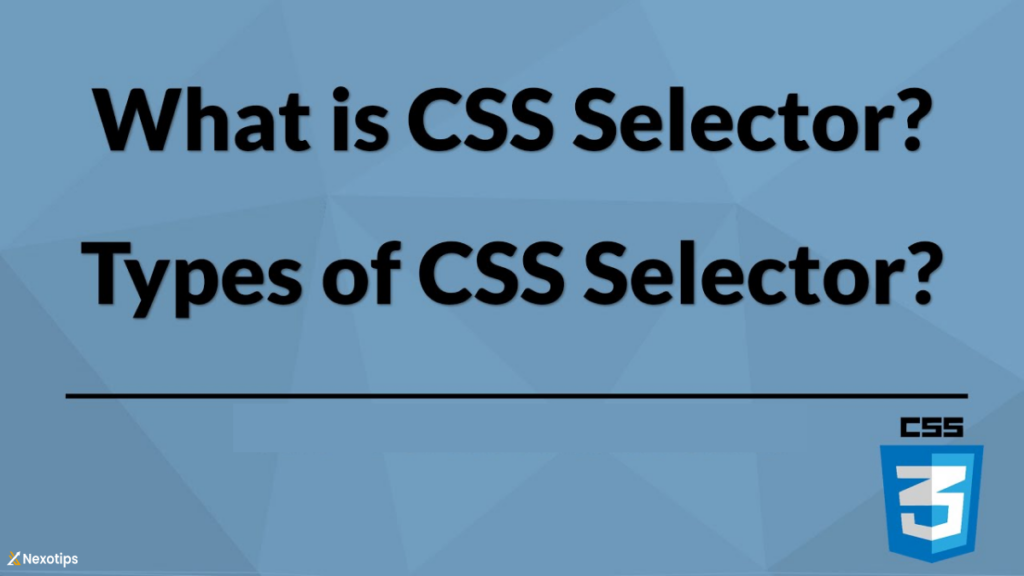Table of Contents
CSS (Cascading Style Sheets) selectors are the heart of CSS. They allow you to target HTML elements and apply styles to them. Understanding CSS selectors is crucial for effective web design and development. This guide will take you through the various types of CSS selectors, from the basics to the advanced, and show you how to use them effectively in your projects.
1. Introduction to CSS Selectors
CSS selectors determine the elements that will be affected by a group of CSS rules. They are the first part of a CSS rule. For example, in the rule p { color: red; }, the p is a selector that targets all <p> elements.
2. Basic Selectors
Basic selectors are the simplest and most commonly used selectors. They include the universal selector, type selector, class selector, and ID selector.
Universal Selector
The universal selector (*) matches any element. It is rarely used in isolation but can be useful in certain situations.
* {
margin: 0;
padding: 0;
}
Type Selector
The type selector selects elements based on their tag name.
p {
font-size: 16px;
}
Class Selector
Elements possessing a particular class attribute are pinpointed by the class selector. It is preceded by a dot (.).
.highlight {
background-color: yellow;
}
ID Selector
The ID selector targets an element with a specific ID. It is preceded by a hash (#). IDs must be unique within a page.
#main-header {
font-size: 24px;
}
3. Attribute Selectors
Attribute selectors focus on elements depending on whether an attribute is present or its value. There are several variations:
[attribute]: Targets elements with a specified attribute.[attribute=value]: Targets elements with a specified attribute value.[attribute^=value]: Targets elements with an attribute value starting with a specific value.[attribute$=value]: Targets elements with an attribute value ending with a specific value.[attribute*=value]: Targets elements with an attribute value containing a specific value.
input[type="text"] {
border: 1px solid #000;
}
a[href^="https"] {
color: blue;
}
4. Pseudo-classes and Pseudo-elements
Pseudo-classes
Pseudo-classes select elements based on their state. Common pseudo-classes include :hover, :focus, :nth-child, and :nth-of-type.
a:hover {
color: red;
}
input:focus {
border-color: blue;
}
li:nth-child(2) {
font-weight: bold;
}
Pseudo-elements
Pseudo-elements style specific parts of an element. Common pseudo-elements include ::before, ::after, ::first-letter, and ::first-line.
p::first-line {
font-weight: bold;
}
p::before {
content: "Note: ";
color: red;
}
5. Combinators
Combinators define relationships between selectors. There are four combinators: descendant, child, adjacent sibling, and general sibling.
Descendant Combinator
The descendant combinator (space) targets elements that are descendants of a specified element.
div p {
color: green;
}
Child Combinator
The child combinator (>) selects elements that are immediate descendants of a specific element.
div > p {
color: blue;
}
Adjacent Sibling Combinator
The adjacent sibling combinator (+) targets elements that are the next sibling of a specified element.
h1 + p {
font-size: 18px;
}
General Sibling Combinator
The general sibling combinator (~) targets elements that are siblings of a specified element.
h1 ~ p {
color: gray;
}
6. Grouping Selectors
Utilizing selectors in groups enables you to easily apply consistent styles across various elements.
h1, h2, h3 {
font-family: Arial, sans-serif;
}
7. Advanced Selectors
Negation Pseudo-class
The negation pseudo-class (:not()) targets elements that do not match a specified selector.
p:not(.highlight) {
color: gray;
}
The :nth-child() and :nth-of-type() pseudo-classes target elements based on their position within a parent element.
li:nth-child(odd) {
background-color: #f0f0f0;
}
li:nth-of-type(2n) {
color: red;
}
:not(selector): Selects all elements that do not match the specified selector.:has(selector): Selects elements that contain a certain descendant.:is(selector): Selects elements that match any selector in a list.:where(selector): Similar to:is, but with zero specificity.
p:not(.intro) {
color: gray;
}
div:has(p) {
border: 1px solid red;
}
:is(h1, h2, h3) {
color: green;
}
:where(h1, h2, h3) {
color: blue;
}
8. Best Practices and Tips
- Keep it Simple: Use simple selectors whenever possible for better readability and performance.
- Avoid Overusing ID Selectors: IDs are unique and have high specificity, which can make your CSS harder to maintain.
- Group Selectors: Group selectors to apply the same styles to multiple elements and reduce code duplication.
- Use Classes for Reusability: Classes are reusable and make your CSS more flexible.
- Leverage Pseudo-classes and Pseudo-elements: These can add powerful styling capabilities without additional HTML elements.
- Understand Specificity: CSS specificity determines which styles are applied when multiple rules match the same element. Understand how specificity works to avoid conflicts.
9. Conclusion
CSS selectors are fundamental to web development, allowing you to target and style elements effectively. From basic selectors to advanced pseudo-classes and combinators, mastering CSS selectors will enable you to create complex and responsive designs. Practice using different selectors, experiment with combinations, and follow best practices to write clean and efficient CSS.
By understanding and leveraging the power of CSS selectors, you can take your web design skills to the next level and create visually appealing and user-friendly websites.
Read More : CSS Types Demystified : Strategies For Effective Web Styling
